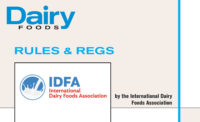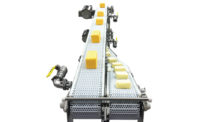Listeria monocytogenes (L. mono) is a gram-positive bacterium and a specific member of the Listeria family. It is capable of causing severe illness and even death. The mortality rate from L. mono in susceptible populations is one of the highest of any known food pathogen.
Listeria monocytogenes (L. mono) is a gram-positive bacterium and a specific member of the Listeria family. It is capable of causing severe illness and even death. The mortality rate from L. mono in susceptible populations is one of the highest of any known food pathogen. Individuals with compromised immune systems are particularly vulnerable. The Centers for Disease Control and Prevention (CDC) report that L. mono is responsible for more than 2,000 reportable foodborne illnesses and more than 500 deaths annually. L. mono is a “bad bug.”
There are many different species in the Listeria family. They are widely distributed in nature and are often prevalent in plant environments. Most species of Listeria are considered to be non-pathogenic. However, the non-pathogenic species “hang out” and attend the same “parties” as the pathogenic and feared L. mono. Recent USDA and Food and Drug Administration surveys have reported that Listeria are present in more than 10% of all raw milk from commercial U.S. dairy farms.
The Listeria family of bacteria, especially L. mono, is considered to be psychrotrophic (capable of survival and growth at refrigerated temperatures). Listeria are not destroyed by freezing. Thus, they often thrive in dairy plant environments where milk, soil, dirt and moisture can accumulate. Prime areas for Listeria to thrive are: raw milk receiving/storage, refrigerated storage, cooling unit condensate lines or drip pans, drains, crevices in walls and floors, cooler conveyors and waste compactors. Also, Listeria bacteria are capable of attaching to equipment surfaces and forming a thick polysaccharide biofilm that protects them against the lethal effect of chemical sanitizers. These biofilms can be a potential source of contamination.
Controlling L. mono in dairy plants
Effective cleaning and sanitizing of equipment and environmental surfaces is essential to controlling L. mono in dairy plants. Fortunately, L. mono is highly susceptible to most sanitizers if the biofilm has been completely removed by proper and effective cleaning. Therefore, the control of Listeria is an issue of effective cleaning. For sanitizers to be effective, all food residues and the polysaccharide biofilm must be removed from the bacteria attached to surfaces.
Chlorinated clean-in-place, foam and manual cleaners are effective in removing the biofilms. Special attention must be devoted to environmental surfaces such as floors, walls, ceilings and other non-processing areas. Environmental areas that are in ill repair will make the control of Listeria almost impossible. Drains, floor gutters and trenches must be thoroughly cleaned and sanitized on a daily basis. Using iodine or Quat blocks in floor drains is highly effective when used in conjunction with proper cleaning and sanitizing. Floor foamers are more effective than foot baths. Most sanitizers, when properly used on clean food contact and environmental surfaces, will be effective against L. mono.
An effective cleaning and sanitizing program must be supported by a robust Good Manufacturing Practices (GMP) program. People are the No. 1 means of distributing Listeria throughout the plant environment, whether by clothing, utensils, cleaning supplies, pallets, forklifts, trash totes or unacceptable hand/glove washing and sanitizing practices. Plant personnel must understand the importance of the GMP program. GMPs must be enforced – every day!
The control of Listeria in plant environments must be verified by a formalized environmental sampling and testing program (see my March 2011 Dairy Foods column). Testing should be for Listeria, not specific for L. mono. Remember – the non-pathogenic species are members of the same country club as L. mono.
Controlling L. mono is an ongoing and continuous “cold war” battle that must be won one day at a time. Effective cleaning and sanitizing is a basic requirement for controlling this dangerous pathogen.
Henry E. Randolph is the founder of Randolph Associates, Inc., which advises dairy processors about improving quality and operations.
Go In-Depth
Learn more about food safety at Randolph Associates Inc.’s training courses. Dairy Technology Workshop, Oct. 10-13 and Pasteurization Workshop, Dec.12-15. Contact Kristy Clark at 205-595-6455 or kristy.clark@raiconsult.com.
Get our new eMagazine delivered to your inbox every month.
Stay in the know on the latest dairy industry trends.
SUBSCRIBE TODAYCopyright ©2024. All Rights Reserved BNP Media.
Design, CMS, Hosting & Web Development :: ePublishing


